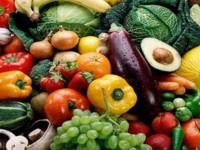Organic Products Market Grows to $24.6 Billion
 U.S. sales of organic products, both food and non-food, reached $24.6 billion by the end of 2008, growing an impressive 17.1 percent over 2007 sales despite tough economic times, according to the Organic Trade Association (OTA), which has made available final results from its 2009 Organic Industry Survey.
U.S. sales of organic products, both food and non-food, reached $24.6 billion by the end of 2008, growing an impressive 17.1 percent over 2007 sales despite tough economic times, according to the Organic Trade Association (OTA), which has made available final results from its 2009 Organic Industry Survey. While the overall economy has been losing ground, sales of organic products reflect very strong growth during 2008. “Organic products represent value to consumers, who have shown continued resilience in seeking out these products,” said Christine Bushway, OTA’s Executive Director.
The survey, conducted by Lieberman Research Group on behalf of OTA, measured the growth of U.S. sales of organic foods and beverages as well as non-food categories such as organic fibers, personal care products and pet foods during 2008. Results show organic food sales grew in 2008 by 15.8 percent to reach $22.9 billion, while organic non-food sales grew by an astounding 39.4 percent to reach $1.648 billion. As a result, organic food sales now account for approximately 3.5 percent of all food product sales in the United States.
“This marks another milestone for the organic food market,” said Bushway.
With tough economic times, consumers have used various strategies in continuing to buy organic products. Because most venues now offer organic products, consumers have the opportunity to shop around. Increased use of coupons, the proliferation of private label brands, and value-positioned products offered by major organic brands all have contributed to increased sales.
Organic Market Facts
- U.S. sales of organic food and beverages have grown from $1 billion in 1990 to $23 billion in 2008. Organic food sales are anticipated to increase an average of 18 percent each year.
- Mass market grocery stores represent the largest single distribution channel, accounting for 38 percent of organic food sales in 2006.
- The sales of larger grocery natural food stores combined with smaller independent natural food stores and chains accounts for 44 percent of organic food and beverage sales.
- Nearly 30.4 million hectares were managed organically by more than 700,000 farms in 138 countries in 2006, according to The World of Organic Agriculture: Statistics & Emerging Trends 2008 report.
- The same report suggests global demand for organic products continues to grow, with sales increasing by over $5 billion a year.
- Australia has the most organic land (12.3 million hectares), followed by China (2.3 million hectares) and Argentina (2.2 million hectares). The United States was fourth, with 1.6 million hectares in 2005 (latest available statistics).
- The ten countries with the most organic land represented a combined total of nearly 24 million hectares, more than three quarters of the world’s organic land. Other countries in the top ten were Italy, Uruguay, Spain, Brazil, Germany, and the United Kingdom.
Sales of organic food have rocketed over the last decade, and this trend looks set to continue. In addition to organic food, nowadays you can even see organic health products such as organic skin care. Whether you want to buy it for moral, environmental, or health reasons, you need to know how to tell if something actually is organic. And this means that you have to rely on labeling. In order to qualify for this label, organic food must consist of at least 95% organically produced ingredients, although salt and water are excluded from this requirement. Organic food products with the label 100% organic, means that the product is made entirely from organically produced ingredients, although water and salt are again excluded from this requirement.
The Organic Trade Association (OTA) is the membership-based business association for organic agriculture and products in North America. Its 1,600 members include growers, shippers, processors, certifiers, farmers’ associations, distributors, importers, exporters, consultants, retailers and others. OTA’s (www.ota.com).

